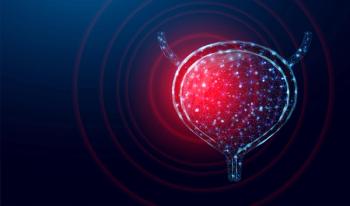
Screening Options Challenging for High-Risk Women
Studies have suggested that MRI, along with mammography, is the best means of detecting breast cancer earlier among high-risk women.
Some of the most agonizing prevention choices occur among women with the highest risk of breast cancer. Because they carry mutations in the BRCA1 or BRCA2 genes, these women may have as much as a 60 percent risk of breast cancer before age 70. Previous studies have suggested that MRI, along with mammography, is the best means of detecting breast cancer earlier among these women, but these studies have had gaps. Most notably, they haven’t used good comparison groups, says Ellen Warner, MD, of the Sunnybrook Odette Cancer Centre in Toronto.
Controlled studies are almost impossible to conduct, Warner says, because it would mean withholding screening from women at high risk of cancer. But having no clear point of reference makes it difficult to clearly and precisely state the benefits and cost of adding MRI screening to mammography. Currently, cost-benefit estimates “are based on a million assumptions,” Warner says.
Looking for the next best thing to a randomized trial, Warner and her colleagues compared two groups of women with BRCA mutations who had been followed by researchers starting in the 1990s. One group of 445 women had regular MRI screenings and mammography. A second group of 830 women received only conventional mammography, primarily because they did not live in areas where more advanced technology was readily available.
In San Antonio, Warner reported that after an average of over three years, the percentage of women who had developed breast cancer was about 9 percent in each group: 41 of 445 women in the MRI group and 76 of 830 in the conventional group. But there were stark differences in how the cancer was discovered, and how advanced it was at diagnosis. Among the women who received regular MRI screening, only 13 percent had positive lymph nodes, compared with 40 percent of women who had not been screened. Also, the cancer among women with standard screening was discovered by physical exam 76 percent of the time. Among the women who received MRI screening, cancer was discovered through physical exam in only one case.
—
"We had way higher numbers in an earlier stage," Warner saidand therefore far fewer at later stages that are more difficult to treat.
Doctors currently recommend that women with BRCA mutations have screening conducted with MRI and mammography, but many women still do not feel the technology is thorough enough. However, Warner said, if women at high risk can feel confident that screening would detect cancer early, they may choose to keep their breasts and not undergo prophylactic mastectomy. She hopes that data showing that MRI with mammography could detect nearly all cancers early would be reassuring to women with BRCA mutations.
“It does give some comfort,” said Claudine Isaacs, medical director of the Cancer Assessment and Risk Evaluation program at the Georgetown Lombardi Comprehensive Cancer Center in Washington, D.C. “The decisions these women make are very difficult.” The biggest question that remains, Isaacs said, is whether adding MRI screening increases the odds of long-term survival.
This kind of screening is not recommended for women of average risk, Warner said, because the technology still carries a high rate of false positive results. In women without BRCA mutations, odds are that any abnormality picked up by screening would actually be benign.
However, another study at the meeting reported that alternating mammography with ultrasound might increase the precision of screening, at least in younger women. Picking up tumors with mammography in premenopausal women is sometimes like looking for a spot of white-out on a blank sheet, because both cancer and dense breast tissue appear white.
The new study, conducted in Taiwan, involved more than 20,000 women aged 40 to 49 who received mammography and ultrasound on alternating years, with approximately half receiving mammography first and half ultrasound first. These two groups were compared to a control group that did not receive screening. After the first year, the researchers found that mammography was able to detect about 1.5-fold more tumors than ultrasound (0.34 percent vs. 0.22 percent). The combination of both methods detected three to four times more cancers than in the women who were not screened, with cancers detected in 0.17 percent of the control group, and 0.51 and 0.58 percent in each group that alternated with both methods. However, the researcher said, this analysis is preliminary. The final results will be calculated after the fourth year of the study.
This article is a part of CURE’s 2009 San Antonio Breast Cancer Symposium coverage. To read more articles from SABCS 2009, visit





